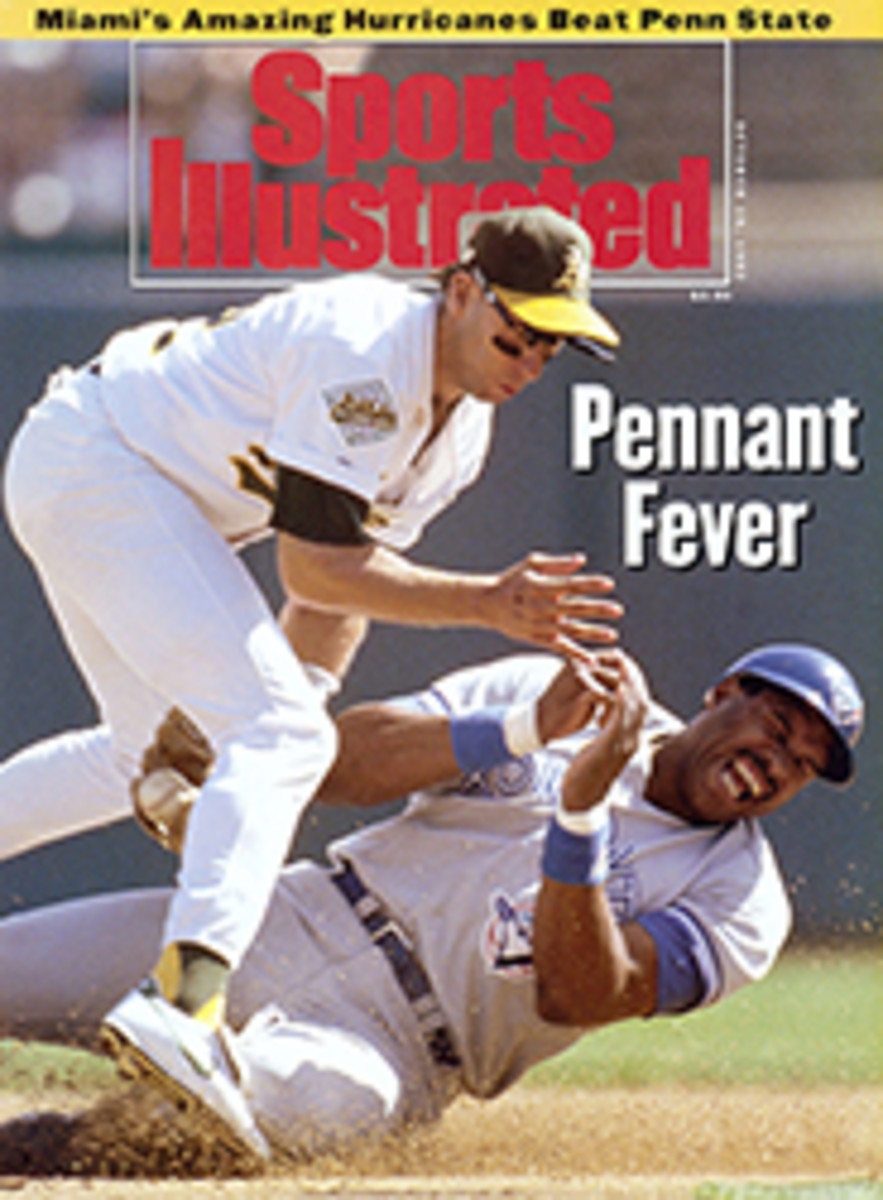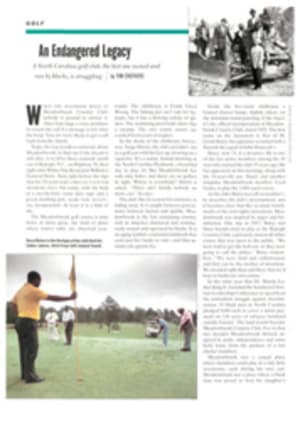
Don't Change That Channel
After spending four years in transmission remission, in the cable backwater of SportsChannel America, the National Hockey League has returned to the big leagues of ESPN. That's the good news. The bad news is that 60 million homes will now see for themselves why the NHL is known as the migraine of television sports.
The games are too long. The puck is too small. The players are unrecognizable. The camera work is dizzying. The rules—icing, two-line offsides—are arcane. How many times have I heard those complaints from TV folks, who cap off their litany of woes with the dual canard that hockey is a regional sport with a limited audience.
A dozen years ago people were saying the same sorts of things about the NBA—it's too black, too urban, too drug infested—and today pro basketball reaps a combined $217.5 million a year from NBC and TNT. Deservedly, the ratings show. What the NBA folks know, and the NHL has not yet learned, is that it's all in how you package the product.
So let's start repackaging. The games are too long—close to three hours versus basketball's two. To speed up NHL games the league could eliminate a bunch of the face-offs, which take forever as personnel is changed and players jostle for position. How about following basketball's lead when it comes to a team's taking possession? If a player freezes the puck against the boards, the other team takes over. Give its guy 10 feet of space and five seconds to pass the puck into play. Same thing for offsides—the defensive team takes possession of the puck, starting behind its blue line. And how about a little pizzazz after a goal is scored? Resume play by dropping the puck from the scoreboard as they do in miniature hockey games. Call it a jump puck.
And for Pete Puck's sake, shorten the time between periods. The ice can be resurfaced in six minutes, but the teams take a 15-minute break. Why? So spectators at the arena can load up at the concession stands and some idiot in loafers can try to swat a puck through a mouse hole and win a Subaru. Meanwhile the TV audience has fled, driven off by those dreadful between-period interviews with dog-tired, clichè-fortified players who keep putting towels over their mouths. Forget that. Ten minutes between periods, max.
And it's time for the NHL to cut its marquee names some slack. Every NBA player knows you can't breathe on Michael Jordan without drawing a foul, and every NBA referee knows Jordan is allowed four full steps between dribbles. Hey, you don't hear the spectators complaining. So what happened during ESPN's first NHL telecast, on Oct. 6, of a game between the Pittsburgh Penguins and the Philadelphia Flyers? Hockey's Jordan, Mario Lemieux, broke away in the third period, but he was hooked and hacked all the way down the ice. He looked like a mule dragging a cart. No call. No goal. No showtime. Lemieux, Wayne Gretzky, Brett Hull—these are the guys who sell tickets. But they spend half their time playing the role of O Tannenbaum while teams drape players on them like popcorn strings. Legal checking, fine. That's hockey. But NHL referees should jump on the cheap, nagging stuff, no matter how minor. Let the stars be stars.
Hockey's problem on television isn't just that the puck is small—it's no smaller than a baseball, for instance. It's also that viewers can't find the damn disk because it's forever careening off-camera. Why? The ice is clogged with bodies—bigger and faster than ever before. Stickhandlers have no room to stickhandle, passes frequently don't connect, and the puck is turned over so often that the TV cameraman looks like a home-video buff filming a ride on a carousel. ESPN's season opener made me seasick.
Get the laggards off the ice. The more men in the penalty box, the merrier. Four-on-four hockey, which has been brought back this year after the league repealed the so-called Edmonton Rule that limited four-on-four situations, is wonderful. Three-on-three is even better. Power plays make for great TV: The puck's easy to find, there's lots of open ice, there are many shots and saves. And two-men-up situations are more entertaining than a mink in your bathtub.
Don't forget about penalty shots, either. It's the most exciting play in sports, bar none. The NHL, of course, calls one about every 40 games. Change the rule. Any time a player is fouled while he has the puck in scoring position, or while breaking away, award a penalty shot. Sure, it might add a few minutes to the games, but the audience would eat it up. So would the players. Heck, even goalies like penalty shots. And why not? Records show they stop about 60% of them.
Finally, end those an inning lies and institute the shoot-out. Five-minute sudden-death overtimes aren't long enough to give us a reasonable expectation that a tie will be broken, as was proved once again by ESPN's Penguin-Flyer broadcast, which ended 3-3. Anyone who watched the shoot-out between Canada and Germany in the Albertville Olympics saw how thrilling the format can be. Alternately, five players from each side take a penalty shot. If the score is still tied after the first round, they go through the order again, only this time it's sudden death. My first guy is Lemieux. Yours is Eric Lindros. Think that would have added any excitement to ESPN's telecast?
O.K, so it ain't gonna happen. I'm a dreamer, right? But don't tell me hockey can't work on television. It could work, all right. In my dreams.
PHOTO
LANE STEWART

